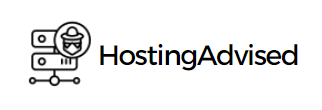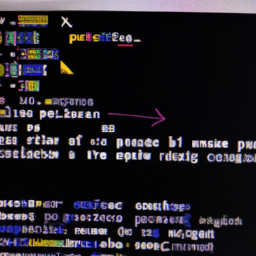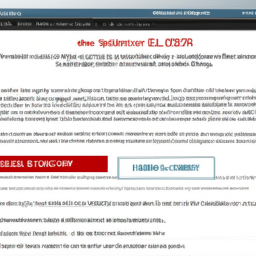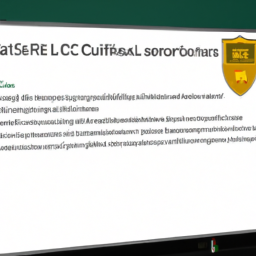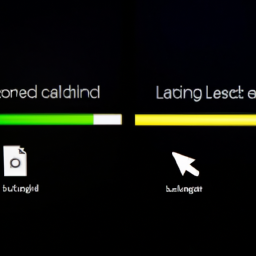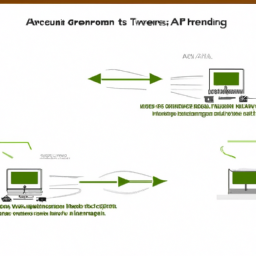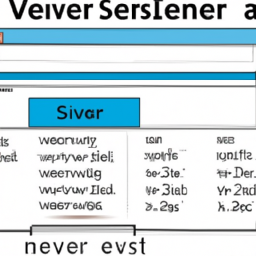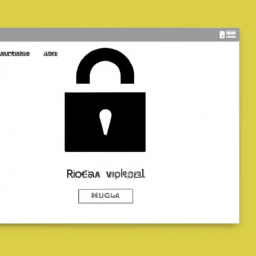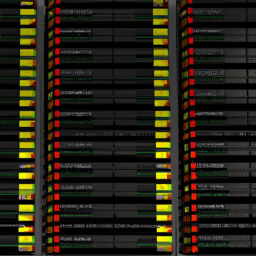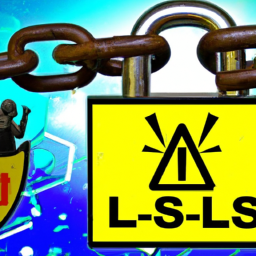Are you tired of those pesky error messages popping up on your Nginx server? Well, fret no more! In this article, we will delve into the intricacies of Nginx configuration and arm you with the knowledge to master it like a pro.
Whether you’re a seasoned sysadmin or just dipping your toes into the world of web servers, understanding how to effectively deal with errors is crucial.
In the vast realm of web development, errors are inevitable. But fear not, for Nginx offers a plethora of tools and techniques to help you identify and troubleshoot these issues with ease. From syntax errors to server misconfigurations, we will guide you through the process of pinpointing and resolving common Nginx errors.
But that’s not all! We will also explore ways to optimize Nginx performance, implement SSL/TLS certificates, secure your server, and even monitor and log Nginx activity.
So, buckle up and get ready to conquer those error messages. With our expert guidance, you’ll become a master of Nginx configuration in no time.
Let’s dive in!
Key Takeaways
- Nginx configuration files are important for managing errors and customizing behavior.
- Troubleshooting Nginx errors requires checking error logs, verifying configuration, checking for conflicting configurations, and restarting Nginx.
- Optimizing Nginx performance involves implementing load balancing and caching strategies.
- Implementing SSL/TLS certificates in Nginx involves generating and installing certificates and enforcing HTTPS redirection.
Understanding Nginx Configuration Files
Understanding Nginx configuration files is crucial for mastering the art of efficiently managing errors with ease. As an experienced administrator, you know that Nginx is a powerful web server that allows you to customize its behavior through configuration files.
These files contain various directives that control how Nginx handles requests, manages modules, and performs load balancing. By understanding the structure and syntax of these files, you gain the knowledge to optimize Nginx for your specific needs.
You can enable or disable modules, configure virtual hosts, and set up complex load balancing configurations. With this level of detail-oriented control, you can ensure that your Nginx server runs smoothly and efficiently.
Moving forward, let’s delve into the next section about identifying and troubleshooting common Nginx errors.
Identifying and Troubleshooting Common Nginx Errors
To effectively handle common issues, you should be able to quickly pinpoint and resolve nginx hiccups. Troubleshooting nginx configuration and handling nginx server errors are essential skills for any web administrator. Here are four key steps to help you identify and troubleshoot common nginx errors:
-
Check the error logs: The error logs provide valuable information about the cause of the issue. Look for any error messages or warnings that can help you diagnose the problem.
-
Verify the configuration: Ensure that your nginx configuration file is correct and properly formatted. Even a small typo can cause errors, so double-check your syntax and make necessary corrections.
-
Check for conflicting configurations: Sometimes, multiple configuration files or directives can conflict with each other, leading to errors. Review your configuration files and eliminate any conflicting settings.
-
Restart nginx: After making any changes to the configuration, restart the nginx server to apply the modifications and see if the error persists.
By mastering the art of troubleshooting nginx errors, you can ensure a smooth and error-free server operation.
Now, let’s delve into optimizing nginx performance.
Optimizing Nginx Performance
Let’s explore how to boost Nginx’s performance for an even smoother web server experience. As an experienced user, you know that load balancing techniques can greatly enhance your server’s efficiency.
Nginx offers various load balancing methods such as round-robin, IP hash, and least connections, allowing you to distribute incoming requests evenly across multiple backend servers.
Additionally, implementing caching strategies can significantly reduce the load on your server. Nginx supports both proxy and fastcgi caching, enabling you to store frequently accessed content and serve it directly from memory.
By intelligently utilizing load balancing and caching, you can optimize Nginx’s performance and ensure a lightning-fast response time for your users.
With these techniques in place, let’s transition into the subsequent section about implementing SSL/TLS certificates in Nginx.
Implementing SSL/TLS Certificates in Nginx
To ensure secure communication on your Nginx server, you need to generate and install SSL certificates.
This process involves obtaining a certificate from a trusted Certificate Authority (CA) and configuring Nginx to use it.
Additionally, enforcing HTTPS redirection is crucial. This redirects all HTTP traffic to the more secure HTTPS protocol.
Troubleshooting SSL/TLS handshake errors is also an important aspect to consider. It helps in identifying and resolving any issues that may occur during the SSL/TLS handshake process.
Generating and installing SSL certificates
Obtaining and setting up SSL certificates can be a game-changer for your website’s security and reliability. Generating wildcard SSL certificates is a crucial step in ensuring that all subdomains are protected by a single certificate. This eliminates the need to obtain separate certificates for each subdomain, making management much more convenient.
Additionally, configuring the SSL certificate renewal process is essential to maintaining a secure website. With the constant advancements in security threats, it’s crucial to regularly update and renew your SSL certificates to ensure they’re using the latest encryption standards. By automating the renewal process, you can avoid any lapses in security and maintain a seamless user experience.
Now, let’s move on to the next section about enforcing HTTPS redirection to further enhance your website’s security.
Enforcing HTTPS redirection
Now that you’ve successfully generated and installed SSL certificates, it’s time to take the next step in securing your website by enforcing HTTPS redirection.
Enforcing HTTPS ensures that all requests to your website are encrypted, providing an extra layer of security for your users. By redirecting HTTP traffic to HTTPS, you can safeguard sensitive information from being intercepted or tampered with.
When configuring HTTPS redirection, it’s important to follow best practices for SSL/TLS configuration to ensure optimal security. Additionally, it’s worth noting that enforcing HTTPS redirection can have an impact on SEO. Search engines prioritize websites that use HTTPS, so by redirecting HTTP traffic to HTTPS, you can potentially improve your website’s search engine rankings.
With HTTPS redirection in place, you’re one step closer to a secure and SEO-friendly website.
Moving forward, let’s explore troubleshooting SSL/TLS handshake errors.
Troubleshooting SSL/TLS handshake errors
If you’re experiencing SSL/TLS handshake errors, troubleshooting them can be a challenging but crucial task in ensuring a secure and uninterrupted connection for your website visitors. To help you resolve SSL/TLS issues, here are three essential steps to consider:
-
Check the SSL/TLS certificate:
- Ensure that the certificate is valid, not expired, and issued by a trusted Certificate Authority (CA).
- Verify that the certificate’s Common Name (CN) matches the domain name used in the URL.
-
Verify the server configuration:
- Review your nginx server configuration file to confirm that it includes the correct SSL/TLS settings.
- Check for any inconsistencies, such as mismatched cipher suites or unsupported protocols.
-
Enable debug logging:
- Enable debug mode in nginx to gather more detailed information about the SSL/TLS handshake process.
- Analyzing the logs can reveal potential issues, such as cipher mismatches or certificate problems.
By following these troubleshooting steps, you can effectively resolve SSL/TLS handshake errors and ensure a secure connection for your website visitors. Now, let’s move on to securing your nginx server.
Securing Nginx Server
To secure your Nginx server, you should start by configuring firewall rules and access control. This will help you control which IP addresses have access to your server and prevent unauthorized access.
Additionally, protecting against DDoS attacks is crucial. You can do this by implementing rate limiting, using caching mechanisms, and leveraging specialized DDoS protection services.
Lastly, implementing HTTP security headers is essential to enhance the security of your server. This includes headers like Strict-Transport-Security (HSTS), Content-Security-Policy (CSP), and X-Frame-Options. These headers can help prevent various types of attacks such as cross-site scripting (XSS) and clickjacking.
Configuring firewall rules and access control
When configuring firewall rules and access control, it’s essential to ensure that only authorized users have access to the system. To achieve this, proper firewall configuration is crucial. This involves setting up rules that filter network traffic and block unwanted connections.
Access control management also plays a vital role in determining who can access the system and what level of access they have. This can be done by implementing user authentication mechanisms, such as passwords or certificates, and assigning appropriate permissions to different user groups.
Additionally, utilizing intrusion detection and prevention systems adds an extra layer of security by monitoring and blocking suspicious network activity.
By carefully configuring firewall rules and managing access control, you can significantly reduce the risk of unauthorized access to your system.
Now let’s explore how to protect against DDoS attacks.
Protecting against DDoS attacks
Shield yourself from the relentless onslaught of a DDoS attack, fortifying your defenses and standing strong against the waves of malicious traffic. When it comes to protecting against DDoS attacks, there are two key strategies you can employ: bot protection and rate limiting.
Bot protection involves implementing measures to distinguish between legitimate users and malicious bots. By setting up rules and filters, you can effectively block suspicious traffic and reduce the impact of a DDoS attack. Rate limiting, on the other hand, allows you to control the amount of traffic that is allowed to access your server within a specific time frame. This helps prevent overwhelming your server and ensures that it can continue to function properly even during an attack.
To better understand these strategies, take a look at the following table:
| Strategy | Description |
|---|---|
| Bot Protection | Utilizes rules and filters to distinguish between legitimate users and malicious bots |
| Rate Limiting | Controls the amount of traffic that is allowed to access the server within a specific time frame |
By implementing these measures, you can significantly enhance your defense against DDoS attacks. In the next section, we will explore the importance of implementing HTTP security headers.
Transitioning into the subsequent section, it is crucial to implement HTTP security headers to further strengthen your server’s security measures.
Implementing HTTP security headers
Enhance your server’s security by implementing HTTP security headers, strengthening your defenses against potential threats. Following HTTP security header best practices is crucial to ensure your server is protected from common vulnerabilities.
Here are four important considerations when implementing HTTP security headers:
-
Content Security Policy (CSP): Specify which resources can be loaded on your website, mitigating the risk of cross-site scripting (XSS) attacks.
-
X-Content-Type-Options: Prevent browsers from sniffing the content type, reducing the chances of content type-related vulnerabilities.
-
X-XSS-Protection: Enable XSS filtering in browsers to protect against cross-site scripting attacks.
-
Strict-Transport-Security (HSTS): Force browsers to always connect to your website using HTTPS, preventing man-in-the-middle attacks.
Avoid common pitfalls in implementing HTTP security headers, such as misconfigurations and not considering backward compatibility.
Now, let’s dive into monitoring and logging nginx to ensure your server remains secure.
Monitoring and Logging Nginx
To ensure the smooth operation of your Nginx server, it’s crucial to set up access logs that track the activity on your server. By analyzing these logs, you can gain valuable insights into the performance and security of your system.
Additionally, using monitoring tools allows you to keep a close eye on the health of your Nginx server. This makes it easier to detect and address any potential issues promptly.
Setting up Nginx access logs
Make sure you configure Nginx access logs to track and monitor the incoming requests and server responses.
Nginx access logs provide valuable information about the traffic hitting your server, helping you to identify potential issues and analyze the performance of your website.
By default, Nginx logs are stored in the /var/log/nginx directory, but you can customize the log file location and format as per your requirements.
Additionally, Nginx offers log file rotation functionality, allowing you to manage the size of your logs and prevent them from occupying excessive disk space.
With log rotation, you can specify the maximum file size or the number of log files to keep, ensuring that your logs remain manageable and easy to analyze.
Analyzing logs for performance and security insights is the next crucial step in optimizing your Nginx configuration.
Analyzing logs for performance and security insights
Analyzing Nginx access logs can provide valuable insights on the performance and security of your website. By analyzing log patterns, you can identify the most frequently accessed URLs, which can help you optimize your website’s structure and improve user experience. Additionally, analyzing logs can help you detect suspicious patterns in the traffic, allowing you to take proactive measures to prevent potential brute force attacks or other security breaches.
To better understand the information in the access logs, you can use a 2 column and 4 row table that displays key data such as the timestamp, client IP address, requested URL, and response code. This table format allows you to quickly scan through the log entries and spot any anomalies or recurring patterns.
Transitioning into the next section, using monitoring tools to track nginx server health, will help you ensure that your server is performing optimally and is secure against various threats.
Using monitoring tools to track Nginx server health
Monitoring tools can help track the health of your Nginx server. They provide a visual representation of its performance and security. With nginx server monitoring, you can obtain valuable insights into the server’s performance metrics. These include CPU usage, memory utilization, and network traffic. These tools enable you to identify any bottlenecks or potential issues that may affect your server’s performance.
By monitoring key parameters, you can proactively address any anomalies and optimize your server’s configuration for smooth and efficient operation. Additionally, tracking server performance allows you to detect any suspicious activity or security breaches. This enables you to take immediate action to protect your server and data.
By leveraging monitoring tools, you can stay on top of your Nginx server’s health. This ensures its optimal performance and security.
Frequently Asked Questions
How do I configure Nginx to handle specific HTTP status codes?
To configure nginx to handle specific HTTP status codes, you can create custom error pages. By doing this, you can provide a more user-friendly experience when troubleshooting nginx errors.
Start by identifying the status codes you want to handle, such as 404 for page not found. Then, create an HTML file for each status code and specify their locations in your nginx configuration file.
This way, you can customize the error messages and guide users through the error resolution process.
What are some best practices for optimizing Nginx performance?
To optimize Nginx performance, start with load balancing. Distribute incoming traffic evenly across multiple servers to ensure efficient resource utilization.
Implement caching strategies to store frequently accessed data, reducing server load and improving response times. Use techniques like microcaching or proxy caching to cache dynamic content and minimize the need for server processing.
Fine-tune Nginx configuration parameters, such as worker processes and connections, to match your server’s capabilities.
Regularly monitor and analyze performance metrics to identify bottlenecks and make necessary adjustments.
How can I redirect HTTP traffic to HTTPS in Nginx?
To redirect HTTP traffic to HTTPS in Nginx, you can follow these steps.
First, make sure you have an SSL certificate installed on your website to secure it with HTTPS.
Next, configure Nginx to redirect all HTTP requests to HTTPS.
To do this, add a server block with a listen directive for port 80 and a return directive with a 301 status code and the HTTPS URL.
This will ensure that all traffic is redirected to a secure connection.
What steps should I take to secure my Nginx server from potential vulnerabilities?
To secure your Nginx server and harden its configuration, there are several steps you should take.
First, ensure that you’re using the latest version of Nginx and regularly update it.
Implement a robust firewall to limit access to your server.
Disable unnecessary modules and limit the permissions of the user running Nginx.
Utilize HTTPS with strong SSL/TLS configurations and regularly scan for vulnerabilities.
Additionally, monitor your server logs for any suspicious activity.
How can I monitor and analyze Nginx logs for troubleshooting and performance analysis?
To monitor and analyze nginx logs for troubleshooting and performance analysis, you need to use tools like log analysis software or command line tools.
Start by enabling logging in your nginx configuration and specifying a location for the log files.
Then, use log analysis software or command line tools like grep and awk to extract and analyze the relevant information from the logs. This will help you identify errors, track performance metrics, and make informed decisions to optimize your nginx server.
Conclusion
In conclusion, mastering Nginx configuration is like being the conductor of a symphony. You have the power to fine-tune every aspect of your server, ensuring it performs at its best and delivering a seamless experience to your users.
By understanding and troubleshooting common errors, optimizing performance, implementing SSL/TLS certificates, securing your server, and monitoring and logging Nginx, you can create a harmonious environment that keeps your website running smoothly.
So grab your baton and dive into the world of Nginx configuration, where you can orchestrate greatness.
